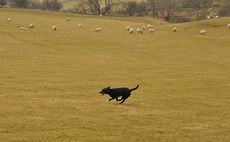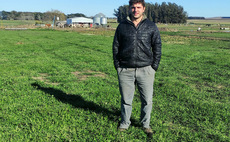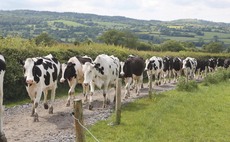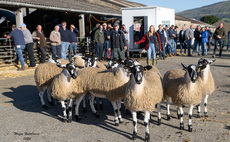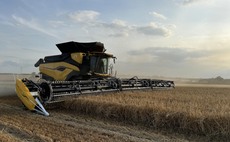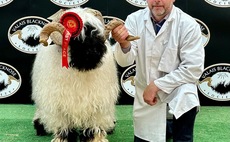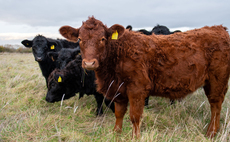Representing the firm's latest heavy-duty fixed chamber round baler, we try out Vicon's new FixBale 500 model. James Rickard puts the machine to work.
As Vicon continues to reassert itself back into the round baler market, the last few years have seen the firm gradually develop and improve its line-up of balers.
Since the company sold off its previous baler factory in Geldrop, Netherlands in 2008, its balers have been built in Ravenna, Italy. A major milestone for the company came with the introduction of the FastBale non-stop round baler. Designed to handle wet, heavy crops of silage, the machine was a massive marker in the sand, indicating to the industry that the company was well and truly back on the round baler market map.
That was back in 2016 and since then the manufacturer has continued to use what it learned with the Fastbale project and incorporate much of the technology into its other round baler products. Vicon's latest model to benefit from that tech is its new FixBale 500, a heavy-duty, fixed chamber round baler.
Compared to its predecessor, the RF 4325, the FixBale 500 is a completely new machine featuring a heavier-duty driveline, beefier frame and all-new look. It is also logical to assume the manufacturer may also produce a combination version of this baler in the future, to provide a more conventional fixed chamber baling/wrapping alternative to its non-stop FastBale model.
In the meantime, the new FixBale 500 represents the firm's only standalone fixed chamber baler in its line-up. As such, it is a product the firm needs to get right. So has it? This is what we intended to find out with our test drive.
Coupled to Valtra's latest G Series tractor, the 135hp G135 Versu as reviewed in a previous article, we tried out the baler in some interesting September conditions.
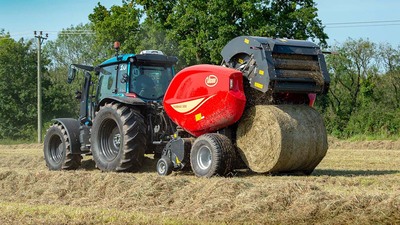
Specifications
- Model: Vicon FixBale 500
- Baler type: Fixed chamber round baler
- Bale width: 1.23m
- Bale diameter: 1.25m
- Number of chamber rollers: 18
- Number of chopping blades: 15
- Binding: Net
- Pickup width: 2.3m
- Hydraulic requirements: One single-acting spool and one-double-acting
- List price (as of September 2020): £40,254 (with 500 tyres and bale ramp)
Driveline
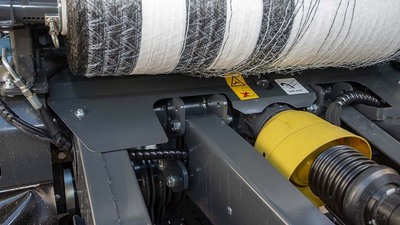
Making up a large part of the baler's structure, its gearbox and cross shaft form one-piece onto which the baler is bolted. This means it does not need any extra or unnecessary framework in this area, much like a ‘structural' tractor which does not need a chassis.
From the cross shaft, power is diverted left for the roller drive and right for the rotor drive. Compared to the RF 4325, FixBale gets much fatter chains and sprockets; 32mm (inch and a quarter) roller chains and 19mm (three quarter inch) pick-up chains. Main driveline protection is a torque limiter, followed by a ‘pin clutch' for the pickup.
Maintenance
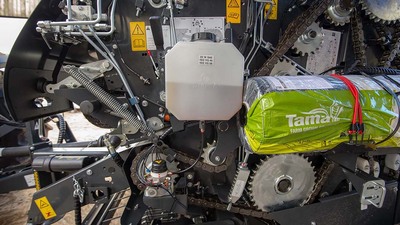
Aiding maintenance, new indicators on the drive chains make tension levels easier to check and a new seven litre capacity oil tank and 12-way distribution system takes care of chain lubrication.
Greasing is also helped by centralised grease distribution systems. While you still need to pump the grease in manually, it does make life a lot easier, with the right amount of grease automatically diverted to where it needs to be.
Maintenance 2
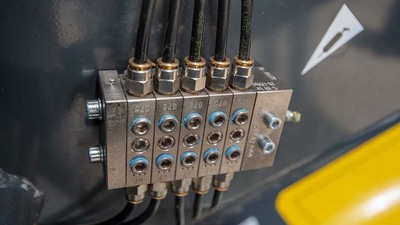
Retained from the RF 4325 is the use of steel hydraulic pipework. As well as keeping baler component layout neat, it also serves to keep the hydraulic oil that little bit cooler.
Transforming the look of the baler is its new panel work. Featuring integrated tail lights, it finishes the baler off well. These lift nice and high too, well out of the way of most people's heads. To improve them further, it would be good if the firm could fit maintenance lighting to the insides of the panel work.
Pickup
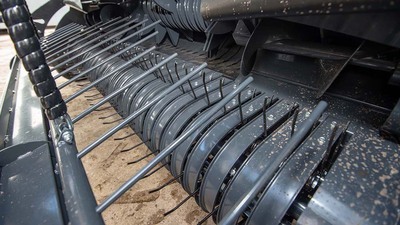
Compared to the RF 4325, FixBale gets a wider pickup. At 2.3m it is effectively one tine wider at either end. The 5mm thick tines are also 10mm longer, designed to handle more crop.
While tines have got bigger, the tine band gap has reduced by 4mm, reducing the amount of debris getting inside the pickup reel. In theory, it should run cleaner.
Unlike several manufacturers which now use cam-less pickups, Vicon has stuck with its tried and tested cam-track design, with a cam-track at both ends of the pickup. The five tine bars are also supported by four bearings each; one either end and two in the middle.
Pickup 2
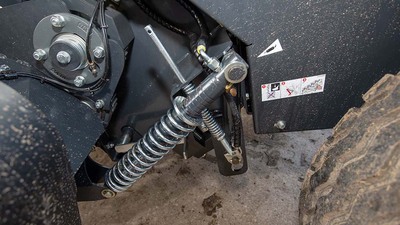
While you could argue that cam-track style pickups are more complicated than cam-less, requiring more maintenance, they do not have to run as fast and, as we have found, can often provide a cleaner sweep in more challenging conditions.
Pickup lift height has also been boosted, thanks to the pickup now pivoting around the feed rotor shaft. It certainly gave plenty of clearance in the field when lifted. It also appeared to offer a consistent crop flow to the feed rotor.
The pickup's spring suspension has also been relocated. It is much neater than the old layout, affording better access and easier adjustment.
Crop press roller
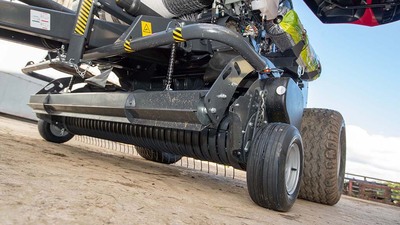
Keeping crop under control is a new crop press roller. Featuring a generous amount of travel, it also gets inboard bearings. These are said to run cleaner and be better protected as a result.
In addition, the crop press' side arm holders are also beefier and now feature bump stops - a small, but significant improvement over the old design.
Thanks to chains which are better to get at than before, crop press roller height can also be adjusted easier.
Wheels and tyres
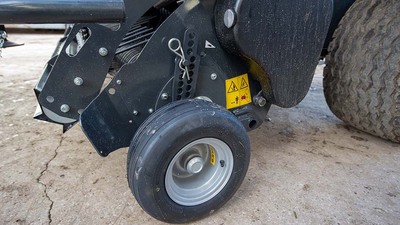
As with most balers, the pickup's guide wheels are removable and can be stored on top of the pickup. Fitting and removing the guide wheels is relatively easy, but does require a bit of a technique.
However, if you specify the baler on its standard fat 500/50 R17 tyres, as ours was, the guide wheels do not stick out further than these, so will rarely need removing, if at all.
Wheels and tyres 2
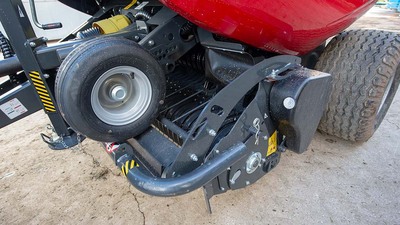
If narrow gateways are a problem and you opted to have the smaller, 400mm-wide tyres fitted to the baler, then having the ability to remove the pickup guide wheels would be a benefit. This said, the 500s did travel very well in some of our wetter spots.
As for the guide wheels, there is no castor option, but the fixed wheels never seemed to be a problem, and their height can also be easily adjusted.
Chopping unit
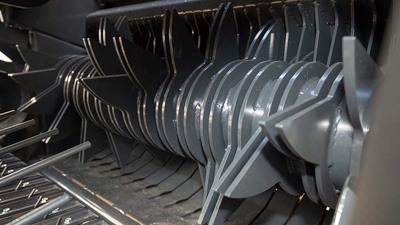
Gaining an extra blade, FixBale features a 15-blade chopping system, producing a theoretical chop length of 72mm. Blade configurations are a bit limited - it is either all 15 engaged or all 15 disengaged.
Unlike many chopping units on the market, often with 23-blades, there is no way to select half of the blades to work with, then switch to the other half when the first half get ‘dull'. However, we suspect this is in the next phase of the FixBale 500's development.
For now, if you wish to use a reduced number of blades you can insert blanking plates. Blade access, through the back of the baler is good, though. This is helped by lowering the drop floor.
Chopping unit 2
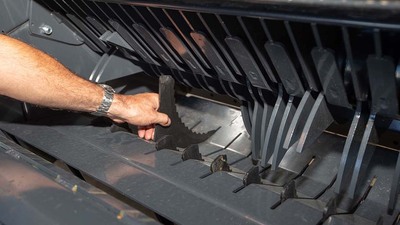
Giving the baler a healthy appetite is a 20 per cent larger diameter feed rotor, now 520mm. It showed too, easily managing a wide variety of lumpy swaths. However, should ambition get ahead of appetite, the baler features a redesigned drop floor to help clear blockages.
As well as lowering at the back, the floor also lowers in parallel at the front. This gives a greater clearance under the feed rotor than previous, making blockages easier to deal with. In total, it gives about 76mm of clearance around the bottom of the rotor.
Bale chamber

Now featuring 18 chamber rollers, FixBale has gained an extra roller in the bottom of the chamber. This is said to spread the bale's weight better and offer more grip on the bale, particularly helping in the early stages of bale formation.
For extra durability, all rollers are mounted via taper locks and 50mm bearings. In critical, high stress areas, six of the rollers get multi-fasten taper locks and double race bearings.
Rather than mechanical latches, now only used by a couple of manufacturers, Vicon has chosen to hold its chamber door shut with hydraulic pressure. This makes bale density easy to adjust, via the control box in the cab, aided by a pressure sensor in the hydraulic line which also shows a reading on the box.
Binding
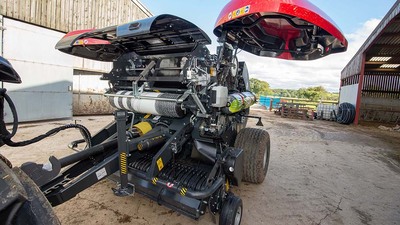
As used across all of its round balers, the FixBale also makes use of the firm's Power Bind system. It is quite a compact system, too, which features a full width injector plate.
Net tension is maintained by a sprung-loaded brake bar. This bar can then be released, via a button on the control box, to allow net rolls to be changed over.
Vicon claims net loading height is the lowest on the market, with the roll's spindle simply swinging forwards/outwards to change it over. There is also room under the baler's panels for a spare roll on either side of the baler.
And it would seem that Vicon is not done in this area yet, with film binding also being looked into.
Control
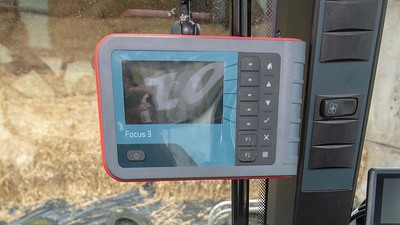
Hydraulic spool requirements for the baler include one single-acting, which is used for the pickup, drop floor and knife bank, and a double-acting for the rear door.
For further control and baler set-up, IsoBus or non-IsoBus controls via the firm's own Focus 3 control box can be used. As standard, it will be the latter which is brought into the UK. But, as we found with our IsoBus-capable Valtra G135, and as a greater number of smaller tractors are equipped with IsoBus, it would have been convenient to control the baler through the tractor's own screen. Maybe the IsoBus control option wants adding to the UK's FixBale option list?
As for the Focus 3 box, it is a pleasantly simple controller to use. The box is not too bulky and its colour screen is ample in size. Buttons are located to the right of the screen and correspond with the onscreen functions. Buttons are positioned so that the controller is good to use while on the move, giving you something to grip hold of.
From the home screen you have control over binding, the diverter valve for the single-acting spool and the net brake. Via further menus, you can set binding to automatic, which can still be manually overridden, and you can adjust bale density. As you would expect, bale count is also displayed, and you can save up to five jobs or fields.
Verdict

From its beefy build to its fresh panel work, the new FixBale 500 certainly looks the part. Compared to Vicon's old RF 4325 baler, the new machine is a definite improvement and it is clear to see that the manufacturer wants to make a mark on the fixed chamber market.
In our crop conditions, which were very close to hay, we managed respectable bale weights of 565kg. Depending on moisture content, Vicon reports bale weights of 750-800kg being achieved in silage.
While our 135hp tractor was a good match for it, you could easily run this baler with a smaller tractor. Or, if you wanted to make more of the baler's available appetite, 150hp-plus up-front would not be out of place either.
A few further developments would not go a miss, though, such as a more flexible chopping unit option and some LED lighting under the panels. But, overall, Vicon looks to have got the ingredients right for a heavy-duty fixed chamber baler.
Likes
- Robust build
- Simple operation
- Big appetite
Dislikes
- Limited chopping options
- No lights under panels
- No IsoBus control option in UK







